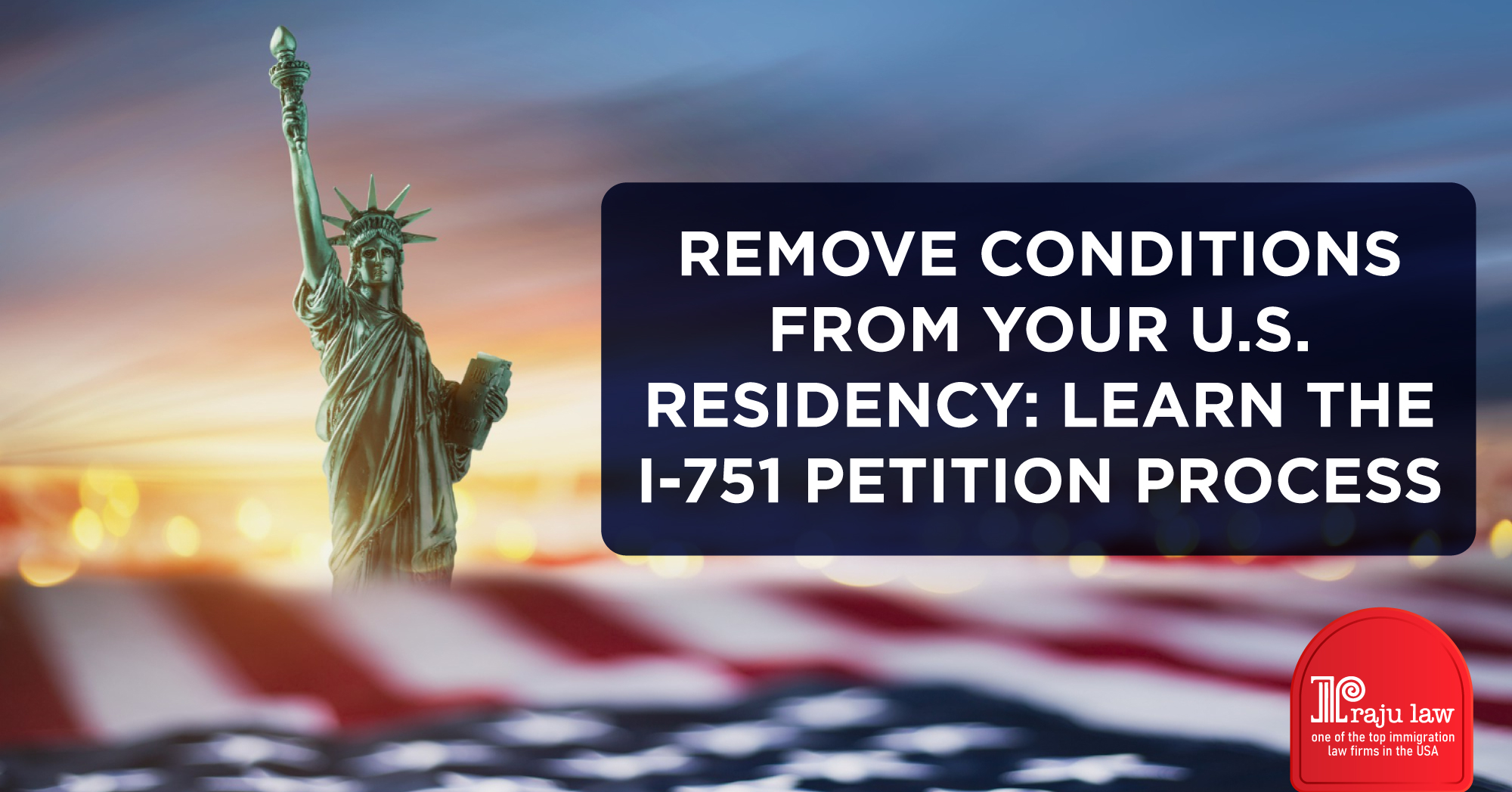Navigating the U.S. immigration system can be complex, particularly when it comes to adjusting one’s residency status. For those who obtained conditional permanent residency through marriage, filing the I-751 petition is a critical step in securing a permanent status. This article aims to provide a comprehensive guide on the I-751, Petition to Remove Conditions on Residence, to help you understand its importance, requirements, and process.
What is the I-751 Petition?
The I-751 petition is used by conditional permanent residents who obtained their status through marriage to a U.S. citizen or permanent resident. Conditional residency is typically granted to people whose marriage was of less than two years at the time of the filing of the Adjustment of Status application. It is granted for a two-year period to ensure the marriage is genuine and not solely for immigration benefits. To remove these conditions and become a permanent resident, you must file Form I-751, Petition to Remove Conditions on Residence.
Who Needs to File the I-751 Petition?
You need to file the I-751 petition if:
You are a conditional resident who obtained status through marriage.
You are a child who obtained conditional residency at the same time or within 90 days of your parents.
Generally, both spouses must file the petition jointly. However, certain circumstances allow for a waiver of the joint filing requirement.
When to File the I-751 Petition?
The I-751 petition must be filed within the 90-day period before the two year completion of your conditional residency. Failing to file within this window can result in the loss of your conditional resident status and possible deportation.
Key Requirements for the I-751 Petition
1. Joint Filing: The petition is typically filed jointly by the conditional resident and their U.S. citizen or permanent resident spouse.
2. Evidence of a Bona Fide Marriage: You must provide evidence that your marriage is genuine and not entered into for immigration benefits. This can include:
Joint financial documents (bank statements, tax returns)
Evidence of shared residence (lease agreements, utility bills)
Affidavits from friends and family
Photos and travel documents
3. Waiver of Joint Filing Requirement: In certain cases, you may request a waiver for joint filing with a statement and proper relevant evidences. This can apply if:
You entered the marriage in good faith but your marriage was annulled or terminated.
You or your child were battered or subjected to extreme cruelty by your spouse.
Terminating your status and being removed from the U.S. would cause extreme hardship.
The I-751 Petition Process
Prepare and Gather Documents: Collect all necessary documentation to support your petition. This includes the completed I-751 form, evidence of your bona fide marriage, and the appropriate filing fee.
File the Petition: Mail your completed petition and supporting documents to the appropriate USCIS Address. Be sure to use a traceable mailing method.
Receive Receipt Notice: After filing, you will receive a Form I-797, Notice of Action, which serves as a receipt notice and extends your conditional residency status while your petition is processed.
Interview: In some cases, USCIS may require an interview to further evaluate the validity of your marriage. Be prepared to answer questions about your relationship and provide additional evidence if needed.
Decision: USCIS will review your petition and supporting documents. If approved, the conditions on your residence will be removed, and you will receive a 10-year green card. If denied, USCIS will provide the reasons for the denial and information on your options, which may include filing an appeal or reapplying.
Tips for a Successful I-751 Petition
File on Time: Ensure your petition is filed within the 90-day window before your conditional residency expires.
Provide Comprehensive Evidence: The more evidence you provide of your genuine marriage, the stronger your petition will be.
Stay Organized: Keep copies of all documents submitted and correspondence received from USCIS.
Seek Professional Help: If you have a complicated case or need assistance, consider consulting with an immigration attorney like Raju Law. We specialize in all immigration services with the help of expert Attorneys and Legal Consultants.
I-751 Petition after Divorce
If you’re a conditional permanent resident in the United States and you get divorced before filing your I-751 Petition, you’ll need to take specific steps to remove those conditions. Certain conditions and steps in such a situation are outlined below:
Submit anytime: If your marriage ended in divorce before you could file Form I-751, you can submit it anytime before deportation without waiting for the 90-day window before your conditional residency expires.
Request Waiver for Separate Submission: Generally, Form I-751 is filed jointly with your spouse. Since you are divorced, you must request a waiver of the joint filing requirement and file separately. You will need to check the box on the form that applies to your situation, which in this case is “Marriage was entered in good faith, but the marriage was terminated through divorce or annulment.”
Provide Additional Evidence: You must provide some additional evidence that your marriage was entered into in good faith and not to evade immigration laws. If your divorce was due to abuse, you can submit evidence such as police reports, restraining orders, or medical records to support your claim. It is better to include valid evidence that the petitioning spouse was at fault for the end of the marriage or requested the divorce.
Conclusion
Filing the I-751 petition is a crucial step for conditional residents seeking to become permanent residents of the United States. If you find the application process time-consuming and hectic, you don’t have to face it alone. Our Raju Law Team is dedicated to providing you with expert guidance and personalized support every step of the way. Remember, maintaining your immigration status is paramount, so take the necessary steps to ensure your I-751 petition is filed with utmost care and proper guidance.

